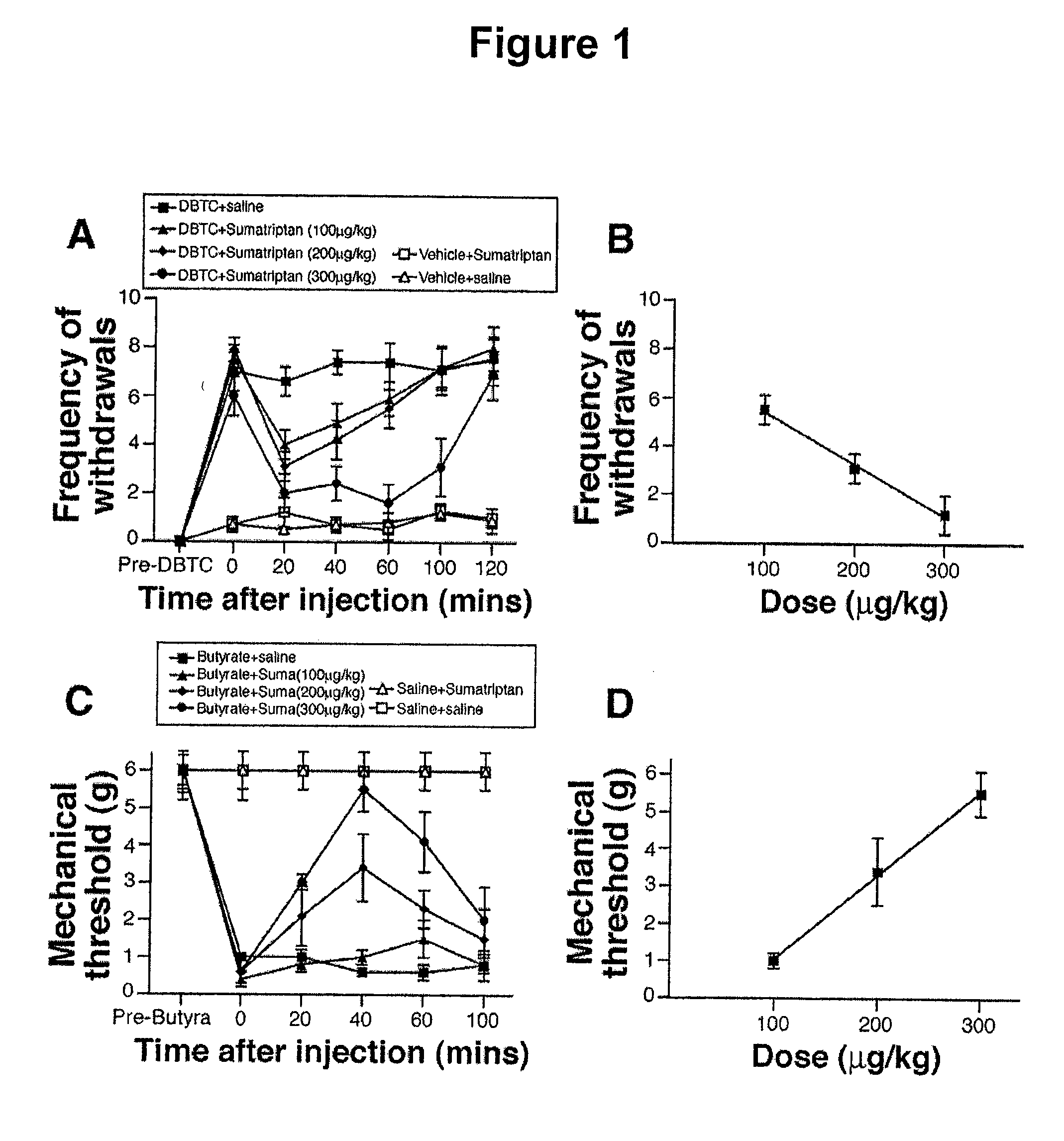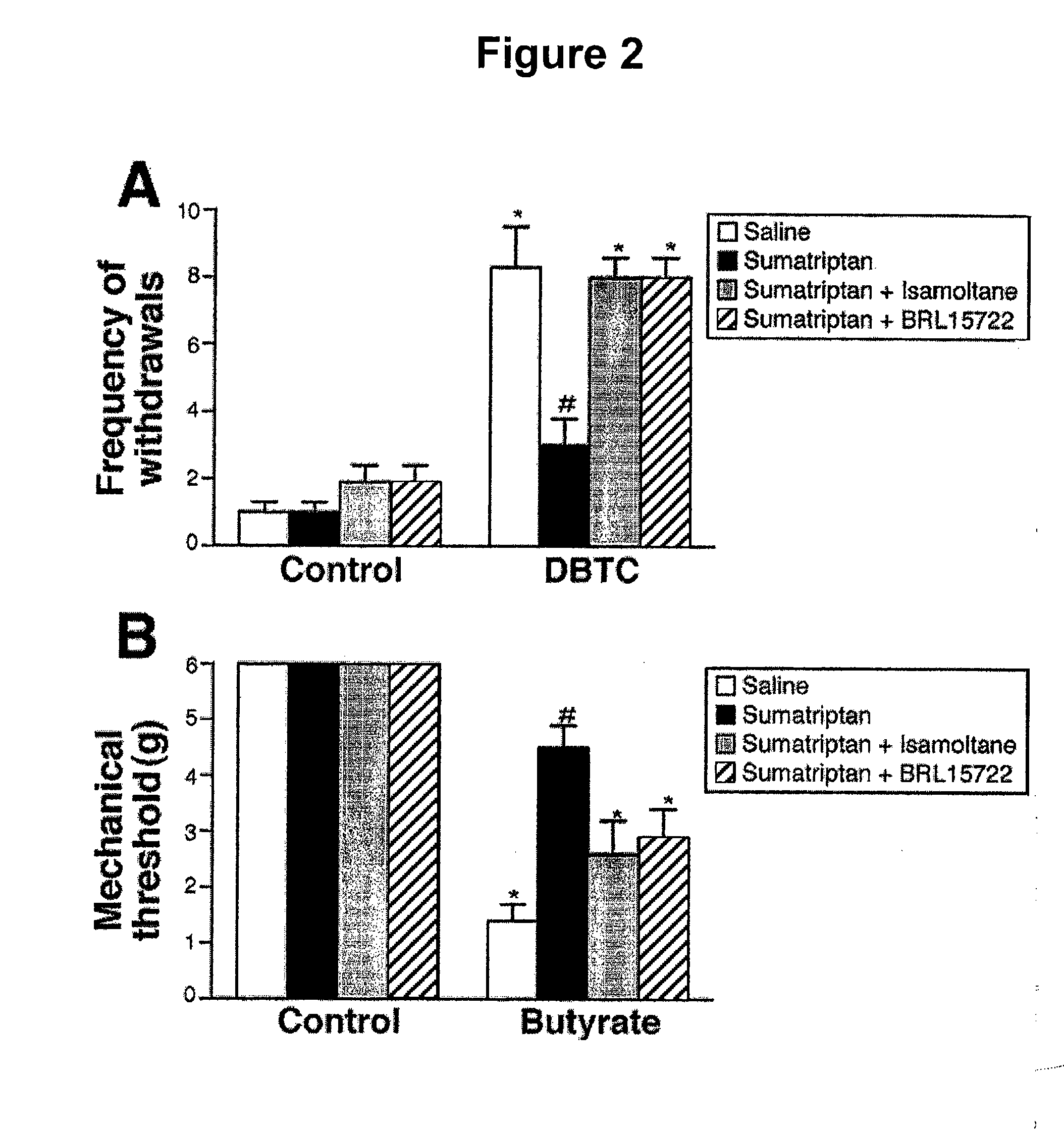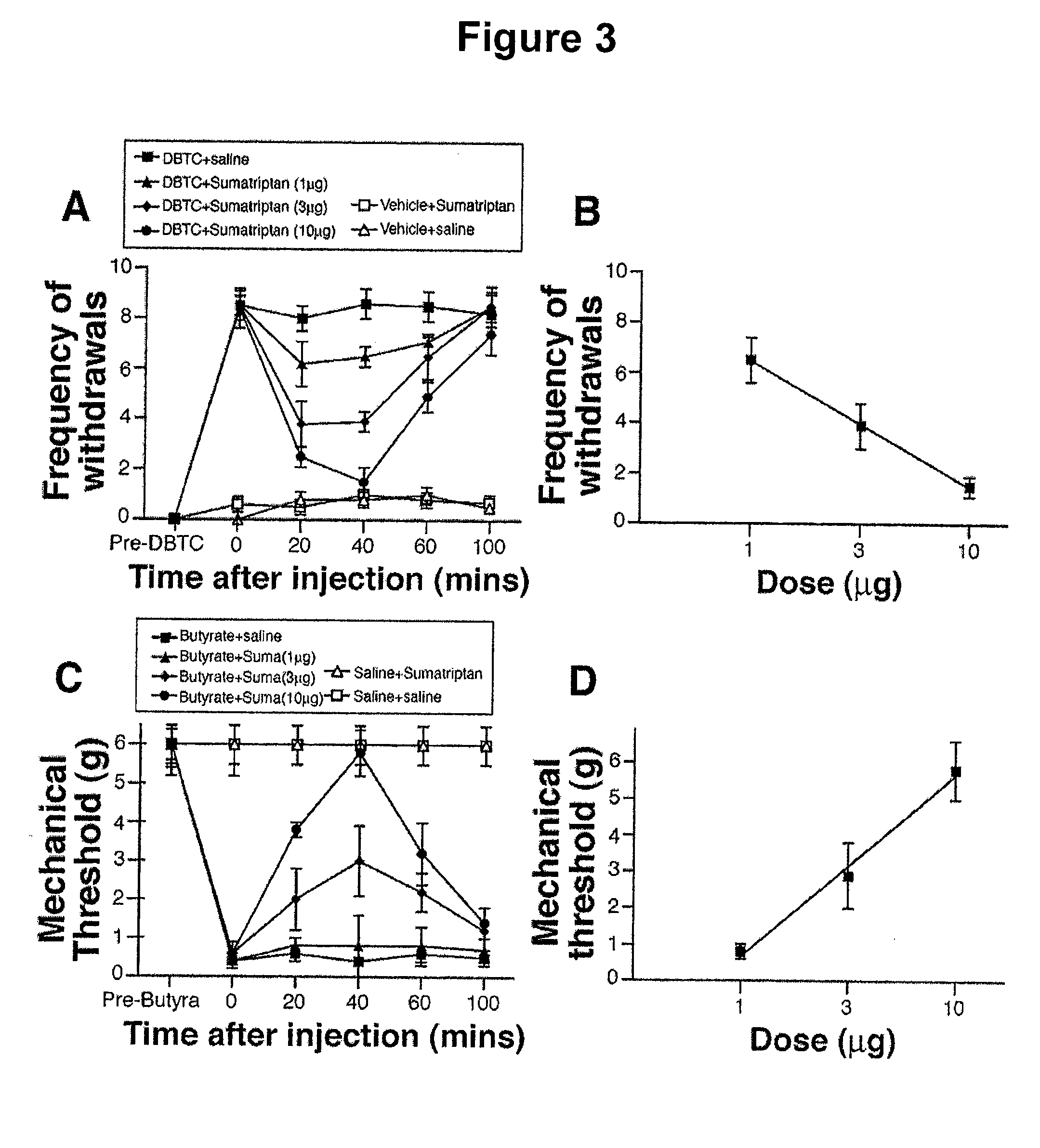Methods for treating visceral pain
a technology for visceral pain and treatment methods, applied in the field of treatment of visceral pain, can solve the problems of limited effectiveness of visceral pain treatment, difficult clinical management of visceral pain, and diminished efficacy
- Summary
- Abstract
- Description
- Claims
- Application Information
AI Technical Summary
Benefits of technology
Problems solved by technology
Method used
Image
Examples
example 1
Systemic Sumatriptan Reduces Referred Hypersensitivity in Visceral Pain Models
[0056]In the experimental pancreatitis model, following IV dibutyltin dichloride (DBTC), rats showed significantly increased withdrawal frequency to mechanical stimulation of the abdomen compared with rats injected with vehicle, indicating development of pancreatitis and associated referred abdominal hypersensitivity as previously described (Vera-Portocarrero et al., Anesthesiology 98:474-484 (2003)) (p<0.05, FIG. 1A, DBTC group treated with saline). On day 6 after IV injection of DBTC, intraperitoneal administration of sumatriptan reduced the frequency of withdrawals in DBTC-injected rats in a time- and dose-dependent manner (FIGS. 1A and 1B). The A50 dose (and 95% confidence interval [CI]) for IP sumatriptan was 172.4 (124.5-386.7) μg / kg. Systemic sumatriptan was active up to 100 minutes postinjection, and the effect dissipated at the 120-minute time point (FIG. 1A). Systemic administration of sumatripta...
example 2
Systemic Actions of Sumatriptan on Visceral Pain Models Are Mediated by Both the 5HT1B and the 5HT1D Receptor
[0057]In the experimental pancreatitis model, IV injection of DBTC produced referred abdominal hypersensitivity as indicated by increased frequency of withdrawals (FIG. 2A, DBTC-saline group). As demonstrated above, IP injection of sumatriptan (300 μg / kg) reduced the frequency of withdrawals (FIG. 2A, DBTC-sumatriptan group). Concurrent systemic (IP) injection of the 5HT1B antagonist isamoltane (4 mg / kg) blocked the effects of sumatriptan (p1D antagonist BRL15722 (0.3 mg / kg) with systemic sumatriptan also blocked the effect of sumatriptan (FIG. 2A). The antagonists injected alone did not produce any effects in either vehicle- or DBTC-treated rats (data not shown).
[0058]In the colonic hypersensitivity model, colonic injection of sodium butyrate produced referred lumbar hypersensitivity as indicated by a reduction in mechanical threshold to muscle contraction and escape behavio...
example 3
Sumatriptan Acts in the RVM to Reduce Referred Hypersensitivity in Visceral Pain Models
[0059]In the experimental pancreatitis model, RVM administration of sumatriptan attenuated the increased frequency of withdrawals associated with referred abdominal hypersensitivity in a time- and dose-dependent manner (FIGS. 3A and 3B). The A50 dose (and 95% CI) for RVM sumatriptan was 4.3 (3.1-16.2) μg. The effects of RVM sumatriptan endured for approximately 60 minutes and dissipated by 100 minutes postinjection (FIG. 3A). Sumatriptan microinjected into the RVM did not alter responses to abdominal stimulation in vehicle-injected rats (FIG. 3A).
[0060]In the colonic hypersensitivity model, RVM administration of sumatriptan elicited a time- and dose-dependent attenuation of lumbar hypersensitivity as indicated by an increase in lumbar dermatome mechanical threshold (FIGS. 3C and 3D). The A50 (and 95% CI) dose for RVM sumatriptan was 3.2 (2.0-12.5) μg. The effects of RVM sumatriptan endured for app...
PUM
| Property | Measurement | Unit |
|---|---|---|
| weight | aaaaa | aaaaa |
| time | aaaaa | aaaaa |
| time | aaaaa | aaaaa |
Abstract
Description
Claims
Application Information
 Login to View More
Login to View More - R&D
- Intellectual Property
- Life Sciences
- Materials
- Tech Scout
- Unparalleled Data Quality
- Higher Quality Content
- 60% Fewer Hallucinations
Browse by: Latest US Patents, China's latest patents, Technical Efficacy Thesaurus, Application Domain, Technology Topic, Popular Technical Reports.
© 2025 PatSnap. All rights reserved.Legal|Privacy policy|Modern Slavery Act Transparency Statement|Sitemap|About US| Contact US: help@patsnap.com



